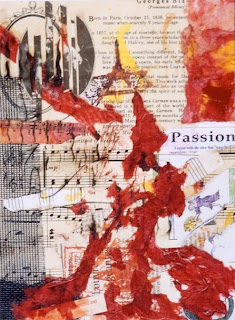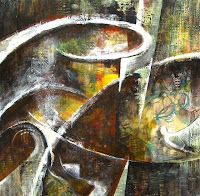
My blogging friend Kim Bennett forwarded the Stroke of the Brush Award to me. She writes very inspirational blogs about painting as well as travelling between the UK and the US. Thank you Kim for your generous award.
Of course, it comes with a catch! I have to list 7 things that are not really known about me, and send the award to 7 bloggers. So, here goes.
1, I don’t know my right from my left – and I’ve always blamed it on being left-handed!
2. Being left-handed is what made me pick up a pencil to draw. When I found out your creativity is in the right side of your brain, I began to understand why I’ve always been drawn to art and artists.
3. I hate to fly. It makes me nervous.
4. Jeopardy is my favorite show on television – yes, I love it more than Law and Order
5. I secretly would like to win big on Jeopardy.
6. I want to put together a class on the History of Atlanta to teach to adults.
7. My dream job is to be a dog-walker, to make enough money to support my art life and get out of the corporate rat race! or replace Alex Trebeck!
I want to pass this award on to some of my favorite bloggers
Of course, I have to include my life partner Joel Conison. I think he is really one of the best photographers around anywhere. He knows his stuff!
Lance Carlson and I have exhibited together repeatedly. I love his work, and his quirky sense of humor. I hope his recent fight with a runaway car resulting in a broken finger doesn’t waylay his creativity for long.
It has been fun to watch Jacqueline Allison really grow as an artist and really pursue her art education seriously. Her work is amazing to me, and she really loves to experiment new techniques.
You have to check out the vibrant colors in Alisha Kay Ard’s shoes!!!! I’m glad she found me on Facebook so I can continue looking at her work!
Someone else I connected with on Facebook is Suzanne Clem-Wheeler. She recently took an art vacation in Europe and it was a pleasure reading her blog throughout the trip. I highly recommend you scroll through it and find the story about painting and attracting a group of children!! I hope someday to actually meet in person!!
I connected with Magdalena Castaneda through taking a class on blogging from Alyson Stanfield’s BLOG TRIAGE class (I highly recommend the class!) and was instantly struck with her passion for art.
Last but not least, Kipp Mullis’s blog BoyohBoyohBoy. I felt Kipp could be included in this because he paints with words. I’ve known Kipp the longest on this list, being co-workers for quite awhile. But unemployment has shown us all a talent we didn’t know he had! Take a look at the blog and subscribe to it – all the posts are beautiful
So – you guys need to write on your blog seven things about yourself and send the award to seven other artists of some sort. If you don’t have seven to send it to right now, then take you time and get out there on the internet and start following other blogs like yours. You will be amazed by who and what you will find!









